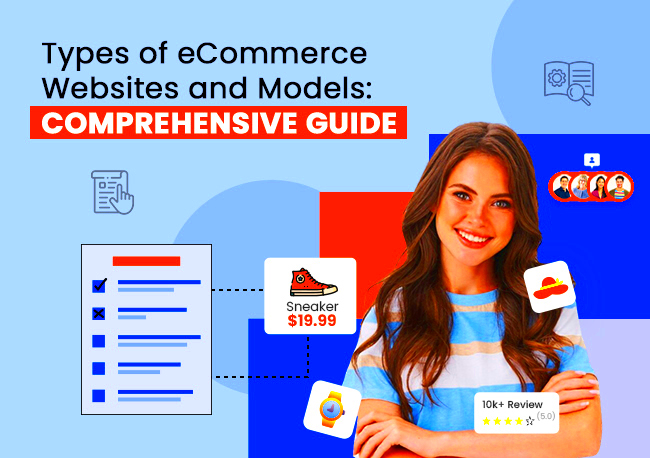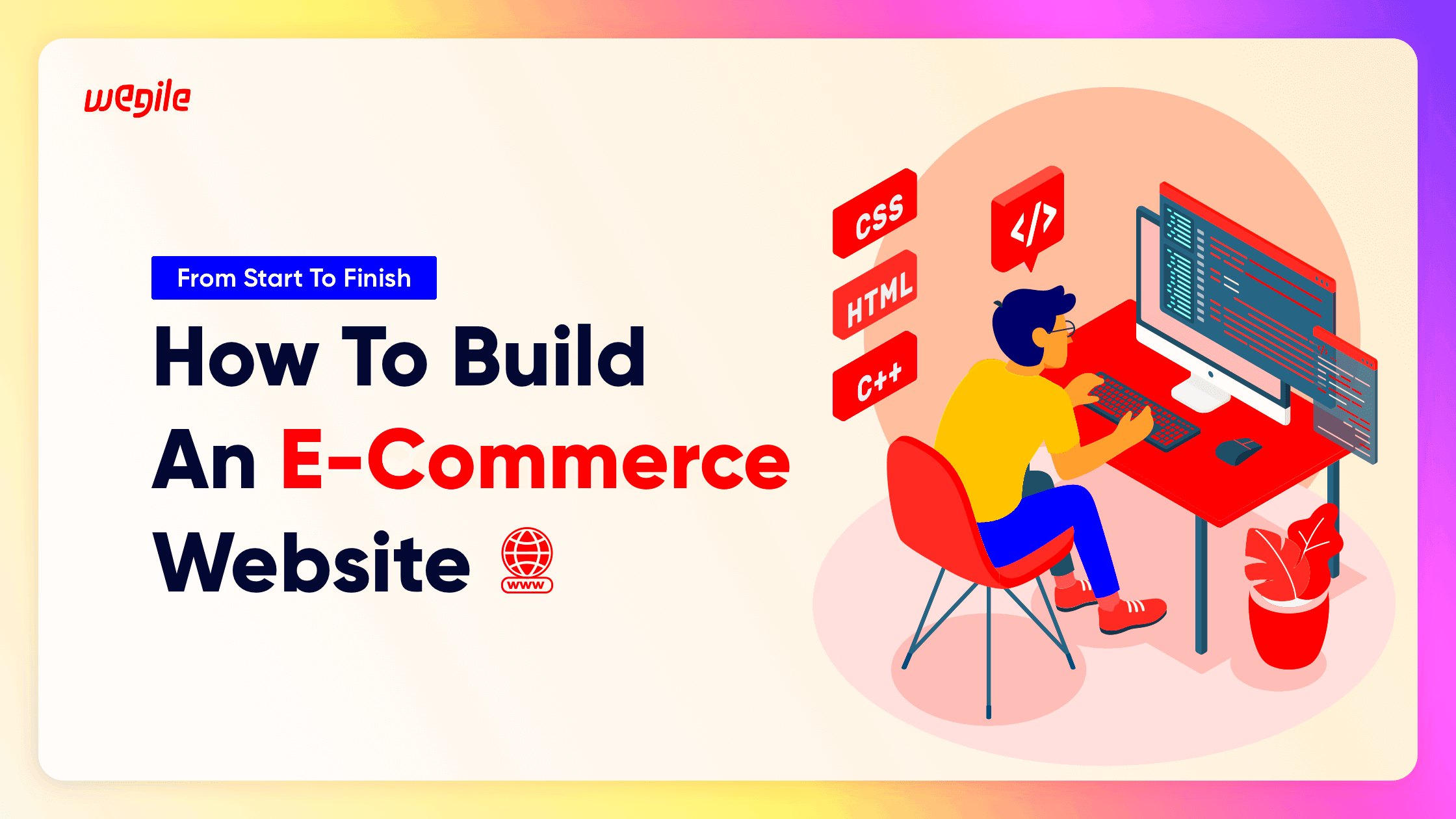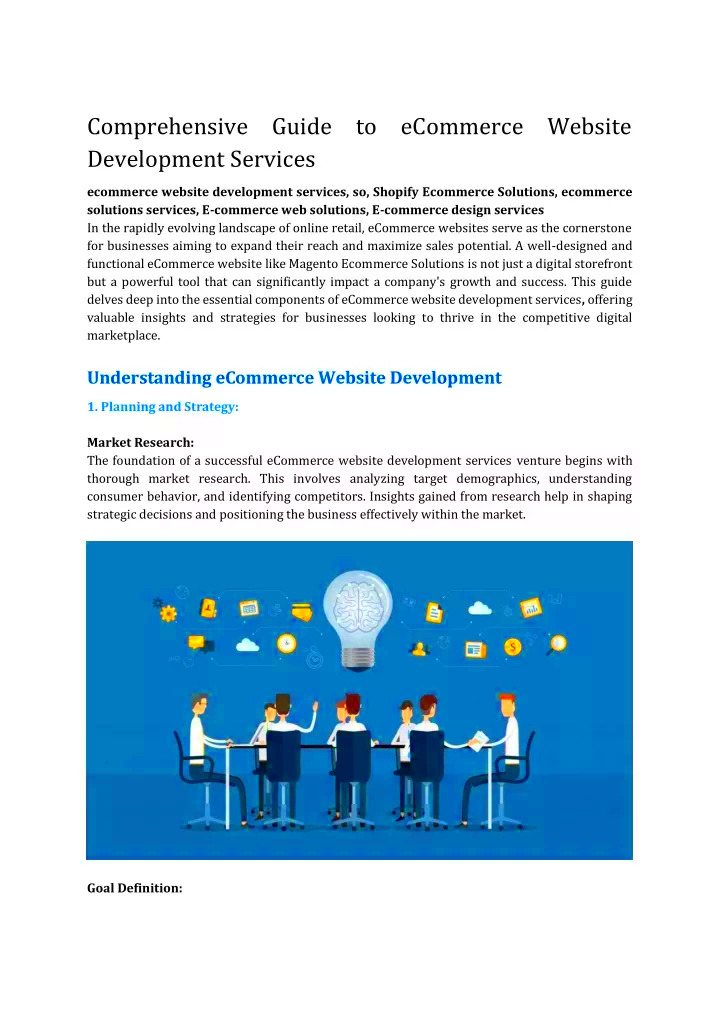In today’s digital landscape, ecommerce websites have revolutionized the way we shop. Gone are the days when retail meant visiting a brick-and-mortar store; now, consumers can browse and purchase products from the comfort of their homes. With just a click, you can access a world of products and services, making ecommerce an essential aspect of modern-day life. This guide takes a closer look at ecommerce websites, their significance, and the various models that exist within this thriving industry.
Types of Ecommerce Models

When it comes to ecommerce, one size does not fit all. Different types of ecommerce models cater to varying needs, customers, and levels of operation. Here’s a breakdown of the main models:
| Model | Description | Example |
|---|---|---|
| B2C (Business to Consumer) | This model involves businesses selling directly to consumers. It’s the most common type of ecommerce. | Amazon, Walmart |
| B2B (Business to Business) | In this model, transactions happen between businesses. It often involves wholesale products or bulk purchases. | Alibaba, ThomasNet |
| C2C (Consumer to Consumer) | This model allows consumers to sell products directly to other consumers, usually facilitated by a third-party platform. | eBay, Etsy |
| C2B (Consumer to Business) | In this less common model, individuals sell products or services to businesses, such as freelance services or product manufacturing. | Upwork, Fiverr |
| B2G (Business to Government) | In this model, businesses provide goods or services to government entities, often through formal agreements or contracts. | Government contract platforms |
Each of these models serves a unique purpose and caters to different audiences, illustrating the vastness and versatility of ecommerce. Understanding these various types is crucial for anyone looking to navigate the ecommerce landscape, whether as a business owner or a consumer.
Key Features of Successful Ecommerce Websites

When it comes to creating a successful ecommerce website, several key features can significantly impact the user experience and overall performance. Think of these elements as the building blocks of your online store that can help foster customer trust and encourage sales.
User-Friendly Navigation: Your website should be simple to navigate. Organize your products into clear categories and use filters to help customers locate what they need quickly. A well-structured menu can significantly elevate the user experience.
Responsive Design: Make sure your site looks great and functions well on all devices. With an increasing number of shoppers using mobile devices, responsive design isn’t just a luxury—it’s a necessity!
High-Quality Product Images: A picture speaks a thousand words, especially in ecommerce. Use high-resolution images that allow for zooming in, along with multiple angles and context images. This helps customers visualize the product better.
Secure Payment Options: Security is a top priority for customers when making online transactions. Incorporate multiple payment gateways and display SSL certification to ensure that sensitive data is handled securely.
Customer Reviews and Ratings: Nothing beats social proof. Allow customers to leave reviews and ratings on your products. This not only builds credibility but also aids potential buyers in making informed decisions.
Fast Loading Speed: If your website takes too long to load, visitors will leave faster than you can say “checkout.” Optimize your site speed to keep customers engaged and reduce bounce rates.
A combination of these features can create a seamless shopping experience and can differentiate your ecommerce website from the competition.
Choosing the Right Ecommerce Platform
The choice of ecommerce platform can make or break your online business. It’s like choosing the foundation for a house: the right one supports everything above it. Here are some crucial factors to consider when selecting an ecommerce platform:
- Ease of Use: Look for a platform that is user-friendly, especially if you’re a newbie. A straightforward interface will save you time and frustration.
- Scalability: As your business grows, your platform should be able to accommodate increased traffic and sales without compromising performance. Make sure it can scale alongside you.
- Customization Options: Every brand is unique, and your website should reflect that. Choose a platform that offers enough customization options to match your brand’s identity.
- Integrated Payment Solutions: Make sure the platform supports multiple payment gateways. Customers appreciate variety, so the more options, the better.
- SEO Features: An ecommerce platform with strong SEO capabilities can help you rank higher in search engine results, driving organic traffic to your site.
- Support and Community: Whether you’re facing a technical issue or just need guidance, good customer support can be vital. Consider platforms with robust support options or strong community forums.
In summary, taking the time to research and evaluate different ecommerce platforms will pay off in the long run. You want a solution that not only meets your immediate needs but also grows with you as your business evolves.
5. Essential Ecommerce Website Design Principles
Creating an eCommerce website isn’t just about listing products; it’s about crafting an engaging user experience. Here are some essential design principles that can elevate your online store:
- User-Friendly Navigation: Your website should be easy to navigate. Use clear categories and subcategories, and a search bar to help users find what they’re looking for quickly.
- Responsive Design: With the increasing use of mobile devices, your site must perform well on all screen sizes. A responsive design adapts seamlessly whether on a desktop, tablet, or smartphone.
- High-Quality Images: Invest in professional product photography. High-resolution images allow potential customers to see the details of products, greatly influencing their purchasing decisions.
- Clear Call-to-Action (CTA): Every page should guide the user toward an action, whether it’s “Add to Cart,” “Subscribe Now,” or “Learn More.” Use contrasting colors and prominent placements to make your CTAs stand out.
- Fast Loading Speed: In our fast-paced world, users expect websites to load quickly. Optimize images and minimize code to enhance loading times. Tools like Google PageSpeed Insights can help you analyze your site’s performance.
- Intuitive Checkout Process: A complicated checkout can lead to cart abandonment. Make the process as straightforward as possible, allowing guest checkout and minimizing the number of steps involved.
By adhering to these design principles, you can create a visually appealing and user-friendly eCommerce website that encourages customers to return.
6. Implementing Secure Payment Gateways
When it comes to eCommerce, security is paramount, especially at the payment stage. Implementing secure payment gateways is crucial for building customer trust and facilitating smooth transactions. Here’s what you need to know:
- Choose Reliable Payment Gateway Providers: Popular options include PayPal, Stripe, and Square. Research their security protocols, transaction fees, and ease of integration with your website.
- PCI Compliance: Ensure that your payment gateway is PCI compliant. This means it meets standards set by the Payment Card Industry, ensuring that sensitive information is processed securely.
- SSL Certification: Secure Sockets Layer (SSL) certification encrypts data transferred between your website and the payment gateway. It’s essential to display that you have SSL, typically with a padlock icon in the address bar.
- Diverse Payment Options: Cater to various preferences by offering multiple payment methods, such as credit cards, e-wallets, and bank transfers. The more options you provide, the easier you make it for customers to complete transactions.
- Fraud Detection Tools: Many payment gateways come with built-in fraud detection features. Use these tools to monitor transactions and identify suspicious activities proactively.
By implementing these secure payment gateways, you not only protect customer data but also enhance overall user confidence in your eCommerce store. Remember, a secure checkout can reduce cart abandonment and increase sales!
7. Optimizing Your Ecommerce Website for SEO
When it comes to running an ecommerce website, optimizing for SEO isn’t just nice to have; it’s essential for driving organic traffic and boosting sales. So how do you make sure your site stands out? Let’s dive into some proven strategies!
Keyword Research is the foundation of SEO. Start by identifying relevant keywords that potential customers might use to find your products. Tools like Google Keyword Planner, Ahrefs, or SEMrush can provide insights into keyword volume and competitiveness. A good practice is to focus on long-tail keywords, as they are often less competitive and can give you targeted traffic.
On-Page SEO is crucial for each product page. Make sure to include your chosen keywords in:
- Product titles
- Meta descriptions
- Header tags (H1, H2, etc.)
- Alt text for images
Don’t forget about site speed; a slow-loading website can drive potential customers away. Utilize tools like Google PageSpeed Insights to diagnose and improve your site’s performance.
Quality Content is key. Consider integrating a blog linked to your ecommerce site, where you can share articles about your products, usage tips, or industry advice paired with good SEO practices.
Lastly, ensure your site is mobile-friendly. With an increasing number of consumers shopping on mobile devices, having a responsive design is non-negotiable. Check your website’s mobile usability and make adjustments as necessary!
8. Effective Product Management Strategies
Effective product management is essential for the success of any ecommerce business. It involves overseeing every aspect of your product offerings—from their conception to their sale—and ensuring that your inventory aligns with customer demand.
Inventory Management is a top priority. Use inventory management software like TradeGecko or ShipBob to track stock levels, manage reorders, and forecast demand. This will help prevent overstocking or running out of popular items.
Another critical area is Product Categorization. Organize your products into clear categories to enhance user experience. Think about using filters and sorting options so customers can easily find what they’re looking for. For example:
| Category | Subcategories |
|---|---|
| Clothing | Men, Women, Kids |
| Electronics | Phones, Laptops, Accessories |
Product Descriptions play a vital role in conversion rates. Write compelling descriptions that highlight features, benefits, and customer testimonials to create trust. Good visuals matter too; use high-quality images and videos to showcase your products effectively.
Lastly, gather customer feedback and regularly review your products. This can provide insight into what’s working and what’s not, allowing you to make informed decisions about product adjustments or new offerings. Stay agile, and don’t hesitate to adapt your strategies based on what your data tells you!
Building Trust and Enhancing Customer Experience
In today’s digital landscape, trust is a cornerstone of ecommerce success. When customers browse an online store, they need to feel confident that their personal and payment information is secure. One of the first steps to building this trust is to ensure that your website has a professional appearance. A modern, clean design not only improves aesthetics but also fosters a sense of reliability.
Here are several ways to enhance customer experience while building trust:
- Secure Payment Options: Implement SSL certificates and ensure that payment gateways are PCI compliant. Clearly display trust badges to reassure customers.
- User Reviews: Encouraging customer reviews can boost credibility. Highlight positive testimonials and allow customers to share honest feedback.
- Clear Return Policy: Outline a straightforward return policy. Customers are more likely to purchase if they know they have options in case of dissatisfaction.
- Responsive Customer Service: Provide multiple channels for support, such as live chat, email, or phone. Quick and friendly responses will leave a lasting impression.
Additionally, personalizing the shopping experience can significantly enhance customer satisfaction. Use data analytics to understand customer preferences and behavior, crafting tailored recommendations and promotions. Remember, a customer who feels valued is more likely to return.
By implementing these strategies, you’ll not only build trust with your customers but also create a memorable shopping experience that encourages repeat business. Good luck! Your ability to foster trust will determine the long-term success of your ecommerce venture.
Marketing Strategies for Ecommerce Success
No ecommerce website can thrive without a solid marketing strategy. While there are countless ways to promote your store, focusing on a few key strategies can yield impressive results. Let’s explore some essential marketing approaches that can help your ecommerce business shine.
- SEO Optimization: Search Engine Optimization is crucial for driving organic traffic. Invest time in keyword research, optimize product descriptions, and create informative content that aligns with potential buyers’ searches.
- Social Media Marketing: Engage with your audience on platforms like Instagram, Facebook, and Pinterest. Showcase your products creatively and utilize targeted ads to reach a wider audience.
- Email Campaigns: Build an email list to share exclusive promotions, new products, or informative content. Personalization is key; segment your list to tailor your messages effectively.
- Influencer Collaborations: Partner with influencers who resonate with your brand. Their authentic promotion can introduce your products to a broader audience.
To further enhance your marketing efforts, consider leveraging paid advertising platforms such as Google Ads or Facebook Ads. These platforms allow for targeted advertising based on user behavior and demographics, ensuring that your promotions reach the right audience.
Finally, always track your results using analytics tools. Understanding metrics like conversion rates, customer acquisition costs, and return on ad spend can guide your marketing strategy, helping you adjust and improve over time.
By employing these marketing strategies, you set a solid foundation for your ecommerce success, turning curious visitors into loyal customers.
11. Analyzing Performance and Utilizing Analytics Tools
In the fast-paced world of eCommerce, having a clear grasp of your website’s performance is crucial. By analyzing various metrics, you can make informed decisions that could boost your sales, enhance user experience, and drive customer loyalty. So, how do you effectively analyze your eCommerce platform? Let’s dive into some essential analytics tools and metrics!
Firstly, Google Analytics is arguably the most popular choice. It allows you to track visitor behavior, source of traffic, conversion rates, and more. Here are some important metrics to keep an eye on:
- Traffic Sources: Where are your visitors coming from? Knowing whether they’re arriving via organic search, paid ads, social media, or referrals can help tailor your marketing strategies.
- Conversion Rate: This metric shows the percentage of visitors who make a purchase. A low conversion rate may signal issues with your product pages or checkout process.
- Averaged Order Value (AOV): Understanding the average amount a customer spends can help you develop strategies to increase sales, such as upselling or cross-selling.
But remember, Google Analytics is just the start! You might consider tools like Hotjar for heatmaps, which let you see where users are clicking, or Crazy Egg for A/B testing purposes. These tools provide insights into user behavior, revealing what works and what doesn’t.
Lastly, regularly reviewing these analytics helps you stay ahead. Set up monthly or quarterly reviews to see progress towards your goals. Don’t forget: the key to a successful eCommerce site lies in understanding your audience and continuously optimizing for them!
12. Future Trends in Ecommerce
The eCommerce landscape is ever-changing, with new trends emerging at lightning speed. Staying abreast of these trends can give you a significant competitive advantage. So, what should you keep an eye on for the future of eCommerce? Let’s explore some game-changers!
1. Social Commerce: With the ever-increasing integration of social media platforms into eCommerce, social commerce is set to soar. This means you can sell directly on networks like Instagram, Facebook, or Pinterest, making the buying process seamless and engaging.
2. Personalization: Consumers are craving a shopping experience tailored specifically for them. More brands are using AI-driven recommendations to suggest products based on browsing history, leading to higher conversion rates.
3. Sustainability: Modern shoppers are becoming increasingly environmentally conscious. Integrating sustainable practices into your eCommerce operations can not only improve brand reputation but also attract tech-savvy, eco-friendly consumers.
4. Augmented Reality (AR): AR technology is gaining traction in eCommerce, offering customers a unique way to visualize products. Imagine being able to see how a piece of furniture looks in your living room or trying on virtual clothes!
5. Voice Commerce: With the rise of smart speakers, voice search for shopping is expected to grow. Optimizing your eCommerce website for voice search can give you an edge as customers incorporate voice commands into their shopping experiences.
In summary, keeping an eye on these trends will not only keep your business relevant but also foster better customer engagement and satisfaction. The future of eCommerce is bright—are you ready to shine?
Conclusion
In summarizing this comprehensive guide to ecommerce websites, it’s clear that establishing a successful online store involves multiple facets that require careful planning and execution. From selecting the right platform to employing effective marketing strategies, each component plays a pivotal role in driving sales and building customer loyalty.
To reiterate the essential elements of a successful ecommerce website:
- User-Friendly Design: Prioritize an intuitive layout and mobile responsiveness.
- Product Information: Provide detailed descriptions, high-quality images, and customer reviews.
- Secure Payment Processing: Implement SSL certificates and multiple payment options.
- SEO Optimization: Utilize keywords effectively to improve visibility on search engines.
- Effective Marketing Strategies: Engage customers through email campaigns, social media, and paid advertising.
- Outstanding Customer Service: Offer multiple channels for customer support, including chat and email support.
| Aspect | Key Considerations |
|---|---|
| Platform Selection | Evaluate Shopify, WooCommerce, Magento, etc., based on your needs. |
| Payment Gateways | Research options like PayPal, Stripe, and Square for fees and functionality. |
| Shipping Solutions | Assess integrations with carriers like FedEx and USPS for efficiency. |
By paying attention to these aspects, you can create a robust ecommerce presence that not only attracts customers but also nurtures them into brand loyalists.



